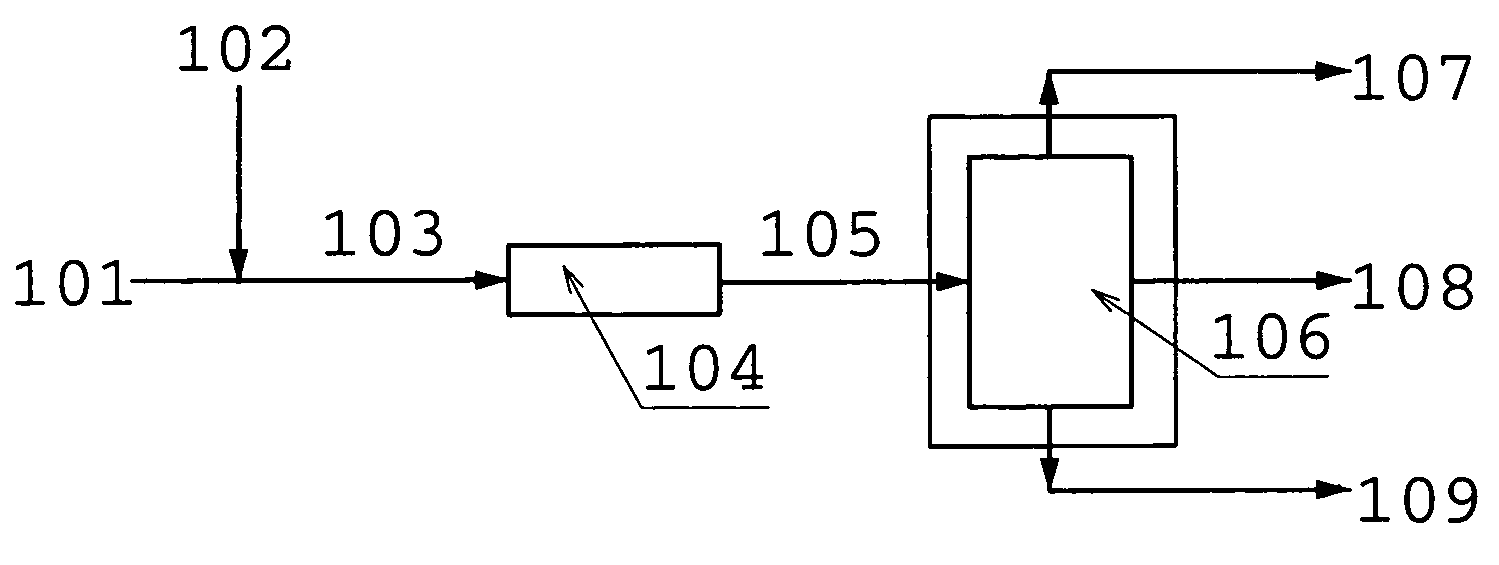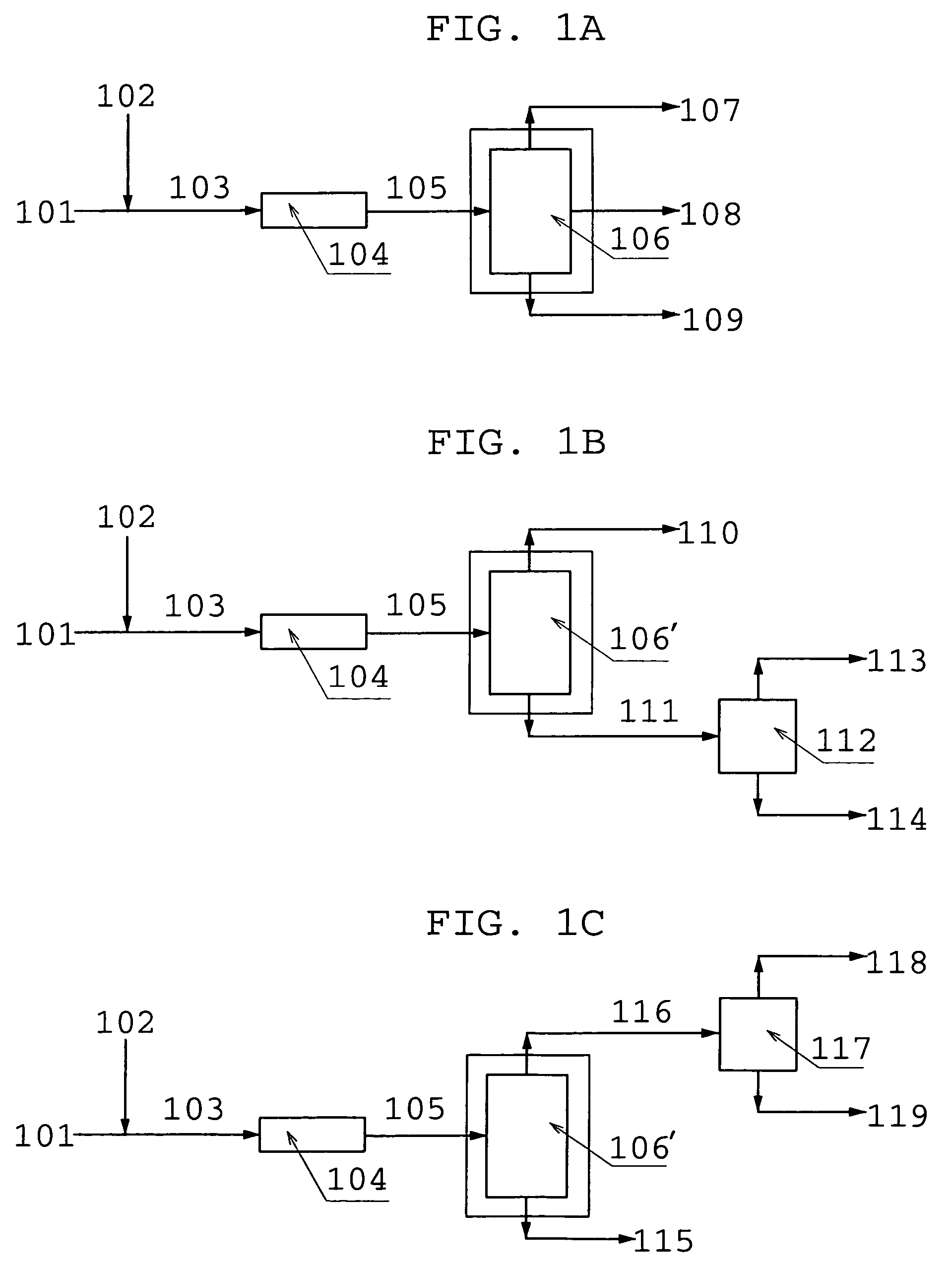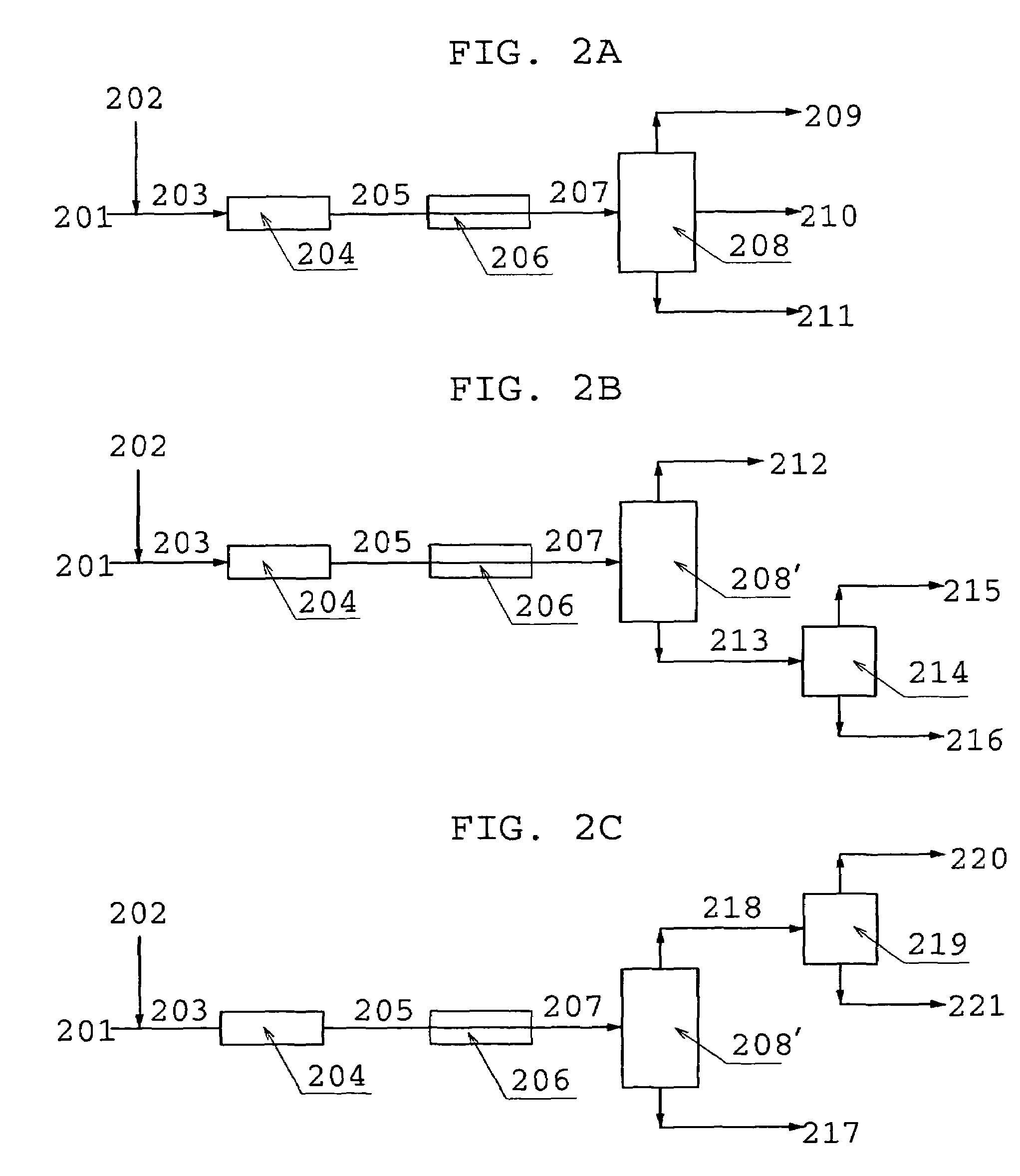Process for reducing the naphthenic acidity of petroleum oils or their fractions
a technology of naphthenic acidity and petroleum oil, which is applied in the direction of liquid separation by electricity, separation process, chemistry apparatus and process, etc., to achieve the effect of reducing the naphthenic acidity of hydrocarbon feeds and reducing the naphthenic acidity of hydrocarbons
- Summary
- Abstract
- Description
- Claims
- Application Information
AI Technical Summary
Benefits of technology
Problems solved by technology
Method used
Image
Examples
Embodiment Construction
[0054]For the purposes of the invention, the expression “naphthenic acids” mean naphthenic carboxylic acids, or naphthenic-aromatic acids.
[0055]The naphthenic acid species removed with the aid of the inventive process are monobasic carboxylic acids of general formula RCOOH, where R is the naphthenic moiety. Naphthenic acids are predominantly made up of alkyl-substituted cycloaliphatic carboxylic acids with minor amounts of non-cycloaliphatic acids. As minor components, aromatic, olefin, hydroxyl and dibasic acids can be present. The molecular weight of the naphthenic acids present in crudes, as determined by mass spectrometry, varies in the range of 200-700.
[0056]The process of naphthenic acidity reduction of petroleum oils or their fractions according to the invention is applicable to production facilities. In this case the petroleum oil already contains water, that is, production or connate water.
[0057]The process is equally applicable to refineries or to any industrial installati...
PUM
| Property | Measurement | Unit |
|---|---|---|
| temperature | aaaaa | aaaaa |
| temperature | aaaaa | aaaaa |
| pressure | aaaaa | aaaaa |
Abstract
Description
Claims
Application Information
 Login to View More
Login to View More - R&D
- Intellectual Property
- Life Sciences
- Materials
- Tech Scout
- Unparalleled Data Quality
- Higher Quality Content
- 60% Fewer Hallucinations
Browse by: Latest US Patents, China's latest patents, Technical Efficacy Thesaurus, Application Domain, Technology Topic, Popular Technical Reports.
© 2025 PatSnap. All rights reserved.Legal|Privacy policy|Modern Slavery Act Transparency Statement|Sitemap|About US| Contact US: help@patsnap.com



